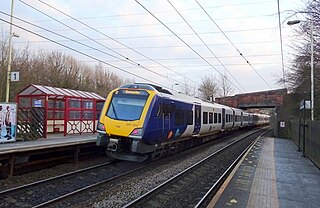
The Wakefield line is a railway line and service in the West Yorkshire Metro and South Yorkshire Passenger Transport Executive areas of northern England. The Wakefield line is coloured yellow on maps and publications by West Yorkshire Metro. The line was electrified in 1989, between Leeds & Wakefield Westgate, as part of the programme to electrify the East Coast Main Line.
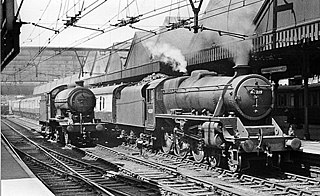
Sheffield Victoria was the main railway station in Sheffield, South Yorkshire, England, on the Great Central Railway,

The North Midland Railway was a British railway company, which opened its line from Derby to Rotherham (Masbrough) and Leeds in 1840.
Attercliffe Road railway station is a former railway station in Sheffield, South Yorkshire, England.

Tinsley railway station was a railway station in Sheffield, South Yorkshire, England, opened in March 1869. This station was designed by the company architect John Holloway Sanders. The station served the growing community of Tinsley and the workers at the nearby steelworks which had moved to or had been founded in the lower Don Valley following major changes in manufacturing methods in the mid - late 19th century. The station, opened by the South Yorkshire Railway, was built on the line between Sheffield Victoria and Barnsley and became a junction station with the opening of the line from Tinsley Junction to the original Rotherham station by the Manchester, Sheffield and Lincolnshire Railway. The station was located by the main Sheffield to Rotherham road in Tinsley, now on the Sheffield side of M1, Junction 34 in Tinsley.
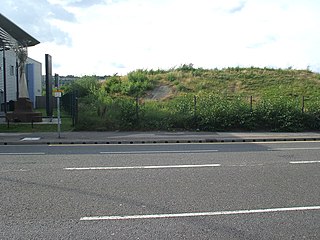
West Tinsley railway station is a former railway station in Sheffield, South Yorkshire, England.

Whitwell railway station serves the village of Whitwell in Derbyshire, England. The station is on the Robin Hood Line 4¾ miles (7 km) south west of Worksop towards Nottingham.
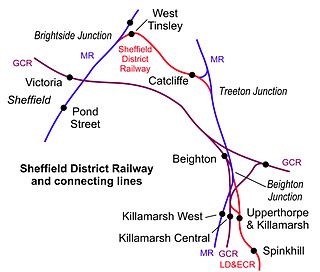
Catcliffe railway station is a former railway station in the Catcliffe area of Rotherham, South Yorkshire, England.

Treeton railway station is a former railway station in the centre of Treeton, Rotherham, England.
Tinsley Park Collieries were a group of coal mines situated in the Tinsley / Darnall area to the east of the City of Sheffield, South Yorkshire, England.

Watson Fothergill was a British architect who designed over 100 unique buildings in Nottingham in the East Midlands of England, his influences were mainly from the Gothic Revival and Old English vernacular architecture styles.

Killamarsh West is a former railway station in Halfway, South Yorkshire, England.
Whittington railway station is a former railway station on the southern edge of New Whittington, Derbyshire, England.

Coxbench railway station was a railway station which served the village of Coxbench in Derbyshire, England. It was opened by the Midland Railway in 1856 on its Ripley branch from Little Eaton Junction to Ripley.
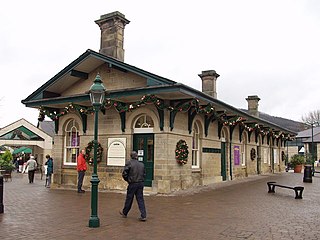
The original Rowsley railway station was opened in 1849 by the Manchester, Buxton, Matlock and Midlands Junction Railway to serve the village of Rowsley in Derbyshire.

The Nottingham and Nottinghamshire Bank was a joint stock bank which operated from its headquarters in Nottingham from 1834 to 1919.
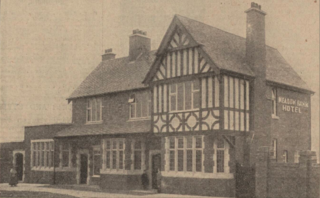
Charles Alfred Broadhead ARIBA was an architect mainly working in Rotherham.

John Dodsley Webster FRIBA (1840–1913) was an English architect who designed more than 15 churches in Sheffield in various Gothic styles, usually working to a tight budget. His work also included hospitals and commercial buildings, small country houses and private houses. All his known work was carried out in the South Yorkshire and North Derbyshire area except for a chapel and school built in Coventry.

John Brightmore Mitchell-Withers FRIBA (1838-1894) was an architect based in Sheffield.
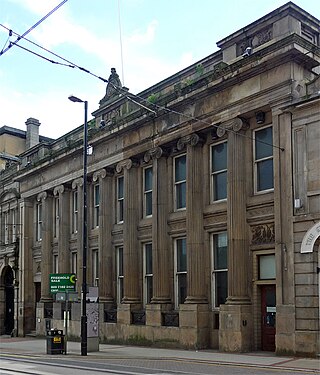
The Sheffield and Hallamshire Bank operated in Sheffield between 1836 and 1913.


















